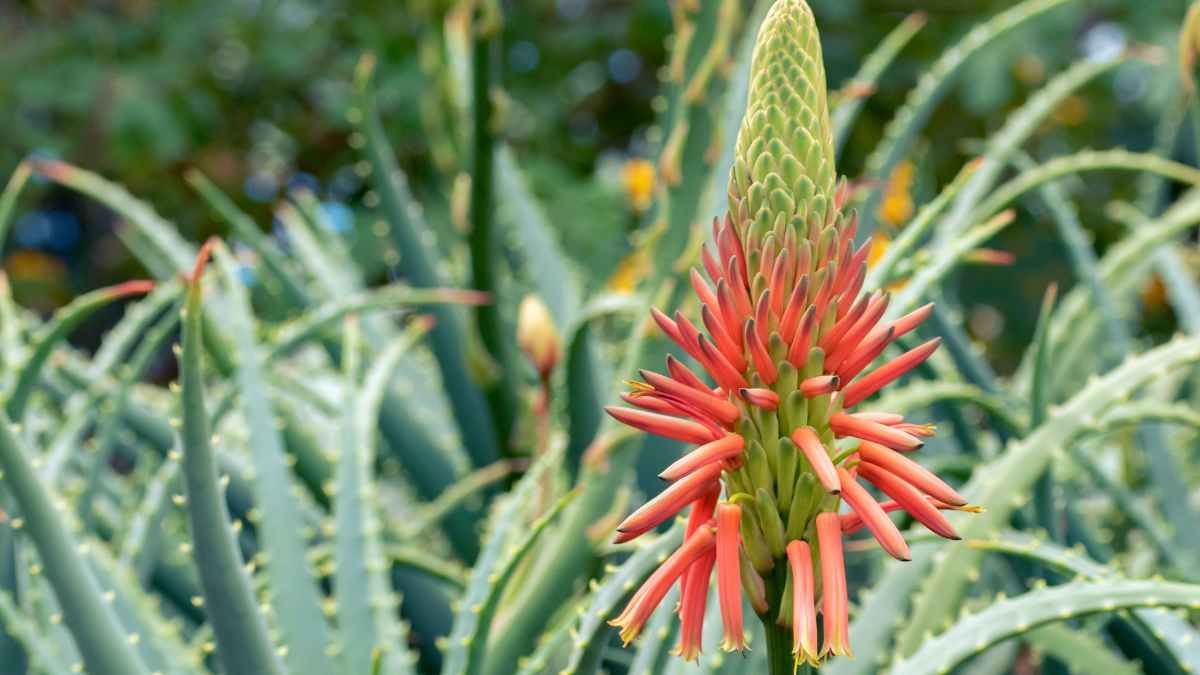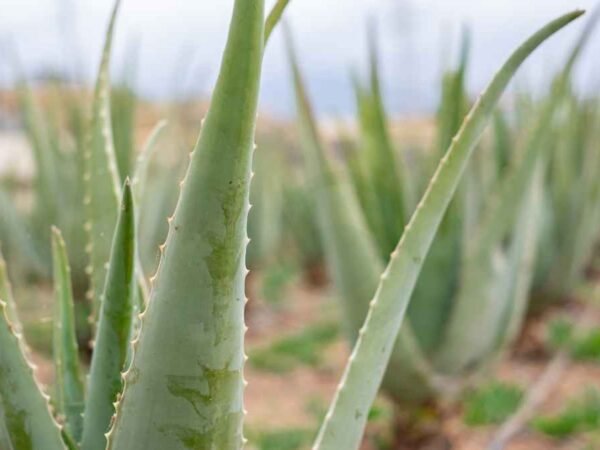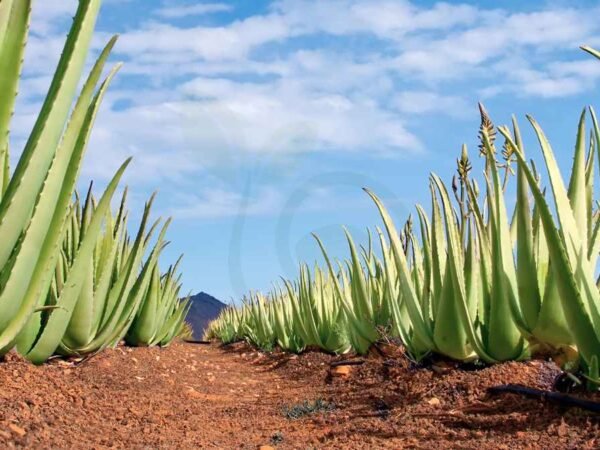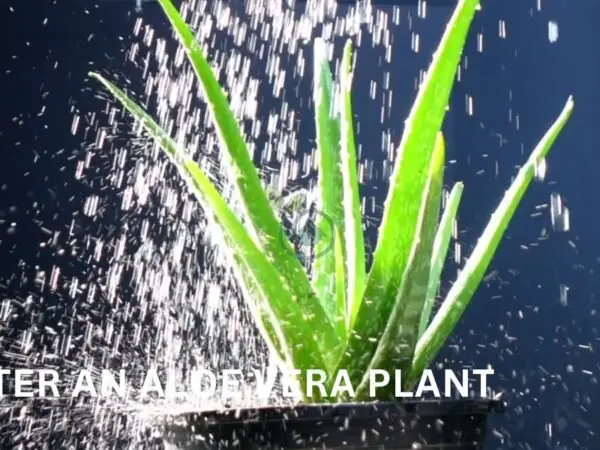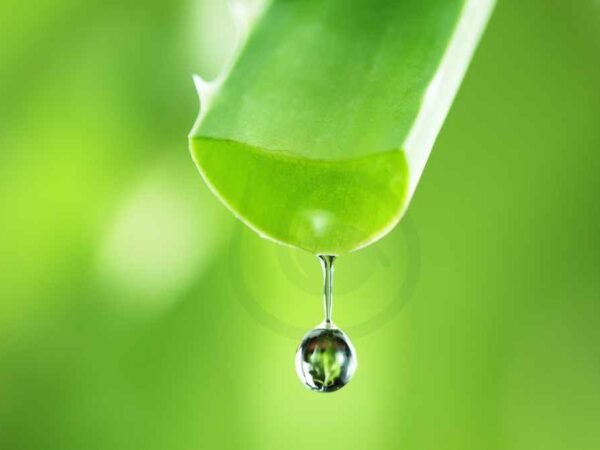Curious about the blooming frequency of aloe vera plants? Wondering how often these succulents burst into beautiful flowers? Aloe vera, known for its soothing gel and air-purifying properties, surprises many with its sporadic flowering habits. While aloe vera is more commonly recognized for its medicinal uses, its occasional blossoms, flower stalk, offer a delightful contrast to its sturdy green leaves.
Stay tuned as we unravel the mystery behind how often aloe vera plants bloom and what conditions encourage these stunning floral displays. Discover the secrets to nurturing your aloe vera plant for optimal health and occasional floral surprises.
Key Takeaways
- Encourage blooming: Provide adequate sunlight and proper watering to encourage aloe vera plants to bloom.
- Monitor conditions: Keep an eye on factors like temperature and pot size, as they can impact the blooming of aloe vera.
- Prune when necessary: Trim dead leaves and spent flowers to promote new growth and future blooms.
- Use well-draining soil: Opt for a well-draining soil mix to prevent root rot and support healthy blooming.
- Avoid overwatering: Overwatering can hinder blooming, so allow the soil to dry out between waterings.
- Enjoy the process: Cultivating aloe vera at home can be rewarding, especially when you witness the beautiful blooms.
Understanding Aloe Vera Blooms
Bloom Frequency
Aloe vera plants bloom sporadically, typically once a year, mostly during late winter or early spring. This succulent's blooming frequency varies based on environmental factors like sunlight and temperature. The mature aloe plants tend to bloom more frequently than younger ones.
Flower Appearance
The flowers of aloe vera are striking, resembling bright candles atop tall stems. They come in hues of red, orange, yellow, or pink, adding a pop of color to the plant. These flowers attract pollinators such as bees due to their nectar-rich nature.
Rarity of Blooming
Indoor aloe plants rarely bloom due to the controlled environment that lacks natural triggers like seasonal changes. Factors like insufficient sunlight and improper watering can hinder blooming indoors. Indoor conditions may not mimic the plant's native habitat.
Post-Flowering Care
After blooming, aloe vera plants require special attention to maintain their health and vitality. It is crucial to trim off the faded flowers carefully to promote new growth. Adequate sunlight exposure and well-draining soil are essential for post-flowering care.
Requirements for Successful Blooming
Plant Maturity
Aloe vera blooms when it reaches maturity, typically between 2 to 5 years old. Age significantly influences the likelihood of blooming, with older plants flowering more frequently. The relationship between plant age and blooming frequency is crucial for a successful bloom cycle.
Adequate Sunlight
For aloe vera to bloom, it requires ample sunlight, ideally around 6-8 hours of direct sunlight daily. Providing sufficient sunlight is essential as it triggers the plant's reproductive process. Sunlight plays a vital role in influencing the blooming of aloe vera plants by stimulating flower development.
Optimal Temperature
To induce flowering in aloe vera, maintaining an ideal temperature range of 60-80°F is necessary. Temperature directly impacts the blooming process of aloe plants, with deviations affecting flower production. Understanding the seasonal temperature preferences is crucial for ensuring successful aloe vera blooming throughout the year.
Soil and Fertility
Well-drained, sandy soil is key to promoting aloe vera blooming, as excess moisture can hinder flower formation. Fertility requirements play a significant role in encouraging aloe plant flowering by providing essential nutrients for growth. The quality of soil directly impacts the blooming process of aloe vera plants, emphasizing the need for proper care and maintenance.
Encouraging Aloe Vera to Flower
Watering Tips
Aloe vera plants require moderate watering for optimal blooming. Ensure the soil dries out between watering sessions. Overwatering can lead to root rot, hindering flowering.
Avoid waterlogging the soil, as it can prevent aloe vera from blooming. Provide well-draining soil to avoid water accumulation around the roots.
To promote healthy blooms, water your aloe vera plant thoroughly but allow the soil to dry out completely between watering sessions.
Fertilizing Strategies
Fertilization plays a crucial role in encouraging aloe vera plants to bloom. Use a balanced fertilizer with equal parts of nitrogen, phosphorus, and potassium for optimal results.
Apply fertilizer sparingly during the growing season, typically in spring and summer, to support blooming. Avoid over-fertilizing as it can harm the plant and inhibit flowering.
Proper fertilization provides essential nutrients that stimulate flower production in aloe vera plants.
Triggering Flowering
Several factors can trigger aloe vera plants to bloom, including proper sunlight exposure and temperature conditions. Ensure your plant receives adequate sunlight for at least six hours daily.
Aloe vera plants typically bloom in response to environmental cues such as seasonal changes or stressors like drought. Mimicking these conditions can induce flowering.
Create an ideal environment by placing your aloe vera plant near a sunny window and maintaining consistent temperatures between 60-80°F (15-27°C) to encourage blooming.
Factors Influencing Bloom Success
Sunlight Needs
Aloe vera plants require ample sunlight to bloom effectively. The ideal condition is 6-8 hours of direct sunlight daily. This exposure aids in the plant's photosynthesis, crucial for flower development. To ensure healthy blooms, place your aloe vera in a spot that receives sufficient sunlight.
Temperature Impact
Temperature plays a vital role in the blooming of aloe vera. These plants thrive best in temperatures between 60-75°F (15-24°C). Extreme temperatures can hinder blooming, so it's essential to provide consistent warmth. Seasonal changes, especially sudden drops or spikes in temperature, can disrupt the blooming cycle of aloe vera plants.
Fertility Effects
l fertility significantly impacts the blooming frequency of aloe vera. Well-draining soil enriched with nutrients promotes robust flowering. Adequate fertility supports the plant's growth and vitality, leading to more frequent and vibrant blooms. Regularly enriching the soil with organic matter can enhance the blooming potential of aloe vera plants.
Soil Conditions
Optimal soil conditions are crucial for successful aloe vera blooming. A well-drained, sandy soil mix is ideal for these plants as it prevents waterlogging and root rot. Proper soil conditions ensure adequate moisture levels for the plant without causing water stress. The right balance of nutrients and drainage in the soil directly influences the blooming capacity of aloe vera.
Caring for Aloe Vera Flowers
Growing and Maintenance
Aloe vera plants require well-draining soil and ample sunlight to thrive. Ensure the plant receives 6-8 hours of sunlight daily. Water aloe plants only when the soil is completely dry, preventing root rot. Trim off any dead leaves to promote new growth.
To encourage aloe vera blooms, provide a balanced fertilizer during the growing season. Maintain a temperature range between 60-80°F for optimal growth. Repot the plant every 2-3 years to prevent overcrowding and promote healthier blooms.
Harvesting Flowers
Harvest aloe vera flowers when they are in full bloom, typically during the spring and summer months. Use clean, sharp scissors to cut the flowers close to the base of the plant. Avoid damaging other parts of the plant while harvesting to ensure continuous blooming.
The harvested aloe blooms can be used fresh or dried for various purposes like making skincare products or herbal remedies. Store fresh flowers in a cool, dark place or dry them immediately for extended use.
Drying and Uses
To dry aloe vera flowers, hang them upside down in a well-ventilated area away from direct sunlight. Allow the flowers to dry completely for 1-2 weeks until they feel crisp to touch. Once dried, store them in an airtight container away from moisture.
Dried aloe vera flowers have multiple uses such as infusing oils for skincare, creating potpourri, or adding them to herbal teas for their health benefits. The dried blooms retain their medicinal properties and can be incorporated into various DIY projects.
Cultivating Aloe Vera at Home
Home Cultivation Tips
To successfully cultivate aloe vera at home, ensure to provide well-draining soil to prevent waterlogging. Place the plant in a sunny spot, as aloes thrive in bright light. Water sparingly, allowing the soil to dry out between watering sessions.
Creating an optimal environment for aloe plant growth involves using a cactus or succulent mix soil. This type of soil provides the necessary drainage for healthy root development. Ensure the pot has drainage holes to prevent water accumulation.
Key considerations for successful aloe vera cultivation indoors include maintaining temperatures above 60°F (15°C). Avoid placing the plant near cold drafts or air conditioning vents, as this can hinder growth. Regularly remove dead leaves to promote new growth.
Encouraging Home Blooms
To encourage aloe vera blooming at home, consider exposing the plant to indirect sunlight for several hours daily. This exposure mimics its natural habitat and stimulates flowering. Adjust the lighting based on your plant's response.
Creating a conducive environment for aloe plants to flower indoors involves providing consistent warmth and avoiding sudden temperature fluctuations. Keep the plant away from cold windows during winter months to prevent damage and encourage blooming.
To promote blooming in indoor aloe vera plants, consider using a balanced fertilizer during the growing season. Apply the fertilizer sparingly to avoid overfeeding and causing harm to the plant. Monitor your plant's growth and adjust care accordingly.
Common Questions Answered
Will Aloe Die After Flowering
Aloe vera plants typically do not die after flowering. The blooming process does not signal the end of the plant's life. Instead, it signifies a healthy and mature plant. After blooming, aloe vera continues to thrive and grow.
How Often Do Aloes Flower
The frequency of aloe vera blooming varies based on factors like age and environment. In optimal conditions, aloes can bloom once a year in the spring or summer. Younger plants may bloom less frequently compared to mature ones.
In specific zones, aloe plants tend to follow distinct blooming patterns. For instance, in regions with warmer climates, aloes may bloom more frequently than in colder areas. Environmental factors, such as sunlight exposure and watering routine, also influence blooming frequency.
Aloe vera plants usually start blooming when they reach maturity, which is around 3-4 years old. Once they begin flowering, aloes can produce vibrant blooms for several weeks before the flowers fade away. This natural cycle of blooming and regrowth contributes to the overall health and vitality of the plant.
Summary
Now you know how to care for your aloe vera plant to encourage beautiful blooms. By understanding its needs, providing the right conditions, and tending to it with care, you can enjoy the sight of vibrant flowers in your home. Remember to be patient and attentive, as each plant is unique and may require slightly different care. With these tips, you can create an environment that promotes blooming and ensures the health of your aloe vera plant.
Take the time to apply these practices and watch as your aloe vera rewards you with stunning blooms. Your efforts will not only result in a visually appealing plant but also a thriving one. Keep nurturing your aloe vera, and soon you'll be enjoying the beauty of its blossoms.
Frequently Asked Questions
How often does aloe vera bloom?
Aloe vera typically blooms once a year, usually in the spring or early summer. However, blooming frequency can vary depending on factors like age, health, and growing conditions.
What are the signs that my aloe vera is about to bloom?
Look for the emergence of a tall stalk from the center of your aloe plant. This stalk will gradually develop buds that will eventually blossom into vibrant flowers. You may notice changes in the plant's overall growth pattern.
Can I make my aloe vera bloom more frequently?
While aloe vera naturally blooms once a year, you can encourage more frequent blooming by providing optimal growing conditions. Ensure your plant receives adequate sunlight, proper watering, well-draining soil, and occasional fertilization to promote healthy blooming cycles.
Do all varieties of aloe vera produce flowers?
Not all varieties of aloe vera produce flowers. Some cultivated species are grown primarily for their ornamental foliage rather than their flowering capabilities. If you specifically desire an aloe plant that blooms, research and select varieties known for their prolific flowering habits.
How long do aloe vera flowers typically last?
Aloe vera flowers can last anywhere from a few days to several weeks, depending on environmental conditions and care provided. Enjoy the beautiful blooms while they last and appreciate the unique aesthetic they bring to your indoor or outdoor space.
Image Source: Paid image from CANVA

